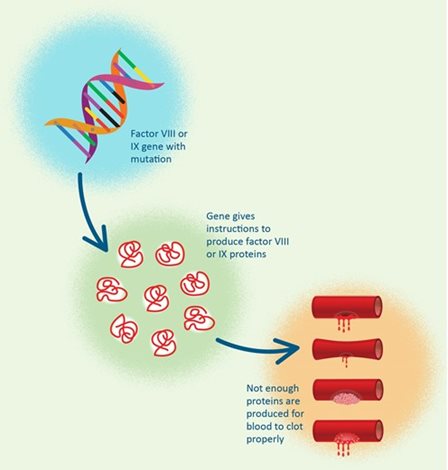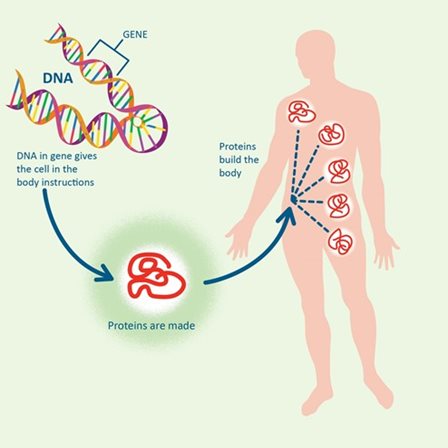Haemophilia and genes
Haemophilia is caused by an alteration (mutation) in the factor VIII (8) or factor IX (9) gene. Factor VIII and factor IX are proteins in the body that help blood to clot.
The ‘haemophilia’ alteration changes the genetic code or instructions carried by the factor VIII or factor IX gene. As a result of these changed instructions, the body does not produce enough of the normal factor VIII or factor IX proteins for blood to clot properly.

What is a gene?
Genes are tiny structures made up of DNA. They are segments of DNA that are located on chromosomes. Genes give the body instructions when it is being formed that decide individual characteristics such as the colour of a person’s hair or eyes.
This is because the DNA in genes gives the body instructions for making proteins. Proteins are the building blocks that form the body and make it work. Blood is made up of proteins, including clotting factors.

Genes are the basic unit in heredity and are passed down from parent to child through generations. The mutation in the hereditary unit is passed on or occurs spontaneously during reproduction and is permanent.
